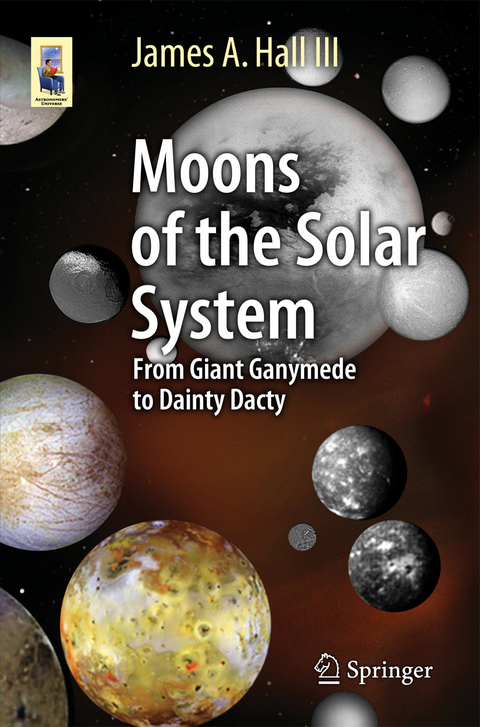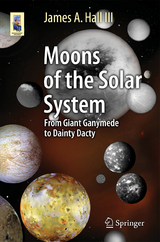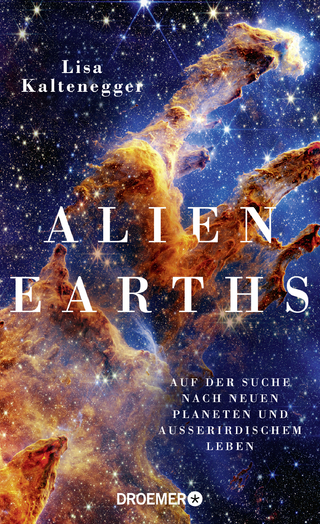Moons of the Solar System
Springer International Publishing (Verlag)
978-3-319-20635-6 (ISBN)
This book captures the complex world of planetary moons, which are more diverse than Earth's sole satellite might lead you to believe. New missions continue to find more of these planetary satellites, making an up to date guide more necessary than ever. Why do Mercury and Venus have no moons at all? Earth's Moon, of course, is covered in the book with highly detailed maps. Then we move outward to the moons of Mars, then on to many of the more notable asteroid moons, and finally to a list of less-notable ones.
All the major moons of the gas giant planets are covered in great detail, while the lesser-known satellites of these worlds are also touched on. Readers will learn of the remarkable trans-Neptunian Objects - Pluto, Eris, Sedna, Quaoar -including many of those that have been given scant attention in the literature. More than just objects to read about, the planets' satellites provide us with important information about the history of the solar system. Projects to help us learn more about the moons are included throughout the book. Most amateur astronomers can name some of the more prominent moons in the solar system, but few are intimately familiar with the full variety that exists in our backyard: 146 and counting. As our understanding of the many bodies in our solar system broadens, this is an invaluable tour of our expanding knowledge of the moons both near and far.
James A. Hall III holds an AA in Liberal Arts from Central Florida College, and a BA in English in Creative Writing (and a minor in Theatre) from the University of South Florida. He earned his MA in Library and Information Sciences (MLIS) and a Graduate Certificate in Museum Studies. Hall is the author of The Distant Suns and The Yesterday with No Tomorrow and has written six planetarium shows for the Museum of Science and Industry in Tampa, Florida.
Table of Contents.- Acknowledgements.- Introduction.- Notes on the Text.- Part I: Moons.- 1: The Inner Planets: Mercury and Venus.- 2: Earth and Luna.- 3: Mars.- 4: Asteroids.- 5: Jupiter.- 6: Saturn.- 7: Uranus.- 8: Neptune.- 9: Distant Minor Planets.- Part II: Projects.- 10: Logging.- 11: The speed of light.- 12: Telescopic Moon Targets.- 13: Life On Moon Worlds.- 14: Citizen Science.- Glossary.- Appendices.
"Hall provides a travel guide for the many worlds out in the solar system. ... The book also contains suggestions for observing projects and 'homework problems' that any interested person can do. ... it is a good reference, worthy of any space enthusiast's bookshelf. ... Summing Up: Recommended. All library collections." (T. D. Oswalt, Choice, Vol. 53 (8), April, 2016)
| Erscheint lt. Verlag | 30.9.2015 |
|---|---|
| Reihe/Serie | Astronomers' Universe |
| Zusatzinfo | XXVIII, 297 p. 133 illus., 57 illus. in color. |
| Verlagsort | Cham |
| Sprache | englisch |
| Maße | 155 x 235 mm |
| Themenwelt | Sachbuch/Ratgeber ► Natur / Technik ► Weltraum / Astronomie |
| Naturwissenschaften ► Physik / Astronomie ► Astronomie / Astrophysik | |
| Schlagworte | Asteroid Moons • Extrasolar moons • Gas Giant Moons • Known Moons Catalog • List of Known Moons • Moon-finding Missions • planetary moons • Planetary Satellites • solar system bodies • Solar System Satellites |
| ISBN-10 | 3-319-20635-4 / 3319206354 |
| ISBN-13 | 978-3-319-20635-6 / 9783319206356 |
| Zustand | Neuware |
| Haben Sie eine Frage zum Produkt? |
aus dem Bereich




